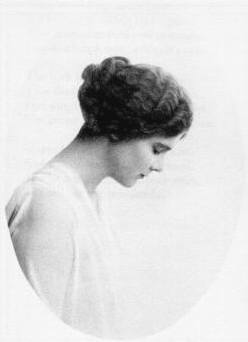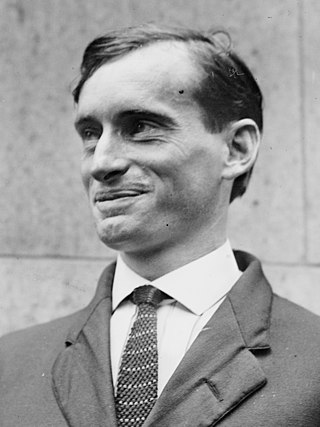Related Research Articles

Robert Lee Frost was an American poet. Known for his realistic depictions of rural life and his command of American colloquial speech, Frost frequently wrote about settings from rural life in New England in the early 20th century, using them to examine complex social and philosophical themes.

Samuel Dashiell Hammett was an American writer of hard-boiled detective novels and short stories. He was also a screenwriter and political activist. Among the characters he created are Sam Spade, Nick and Nora Charles, The Continental Op and the comic strip character Secret Agent X-9.

"The Love Song of J. Alfred Prufrock" is the first professionally published poem by American-born British poet T. S. Eliot (1888–1965). The poem relates the varying thoughts of its title character in a stream of consciousness. Eliot began writing the poem in February 1910, and it was first published in the June 1915 issue of Poetry: A Magazine of Verse at the instigation of fellow American expatriate Ezra Pound. It was later printed as part of a twelve-poem chapbook entitled Prufrock and Other Observations in 1917. At the time of its publication, the poem was considered outlandish, but the poem is now seen as heralding a paradigmatic shift in poetry from late 19th-century Romanticism and Georgian lyrics to Modernism.

Elinor Morton Wylie was an American poet and novelist popular in the 1920s and 1930s. "She was famous during her life almost as much for her ethereal beauty and personality as for her melodious, sensuous poetry."

Margaret Widdemer was an American poet and novelist. She won the Pulitzer Prize in 1919 for her collection The Old Road to Paradise, shared with Carl Sandburg for Cornhuskers.

American poetry refers to the poetry of the United States. It arose first as efforts by American colonists to add their voices to English poetry in the 17th century, well before the constitutional unification of the Thirteen Colonies. Most of the early colonists' work was similar to contemporary English models of poetic form, diction, and theme. However, in the 19th century, an American idiom began to emerge. By the later part of that century, poets like Walt Whitman were winning an enthusiastic audience abroad and had joined the English-language avant-garde.

Muriel Rukeyser was an American poet, essayist, biographer, novelist, screenwriter and political activist. She wrote across genres and forms, addressing issues related to racial, gender and class justice, war and war crimes, Jewish culture and diaspora, American history, politics, and culture. Kenneth Rexroth said that she was the greatest poet of her "exact generation," Anne Sexton famously described her as "mother of us all", while Adrienne Rich wrote that she was “our twentieth-century Coleridge; our Neruda."

Louis Untermeyer was an American poet, anthologist, critic, and editor. He was appointed the fourteenth Consultant in Poetry to the Library of Congress in 1961.

Madison Julius Cawein was a poet from Louisville, Kentucky.

Ash Wednesday is a long poem written by T. S. Eliot during his 1927 conversion to Anglicanism. Published in 1930, the poem deals with the struggle that ensues when one who has lacked faith in the past strives to move towards God.

Babette Deutsch was an American poet, critic, translator, and novelist.

Merrill Moore was an American psychiatrist and poet. Born and educated in Tennessee, he was a member of the Fugitives. He taught neurology at the Harvard Medical School and published research about alcoholism. He was the author of many collections of poetry.

Edith Matilda Thomas was an American poet who "was one of the first poets to capture successfully the excitement of the modern city."

Harry Hibbard Kemp was an American poet and prose writer of the twentieth century. He was known as the "Vagabond Poet", the "Villon of America", the "Hobo Poet", or the "Tramp Poet", and was a well-known popular literary figure of his era, the "hero of adolescent Americans."
Shaemas O'Sheel was an Irish American poet and critic. Born James Shields, he changed his name to an anglicized spelling of its Irish version soon after high school. He worked briefly for the United States Senate (1913-1916), held jobs with various newspapers, and did publicity and advertising work. Although third-generation Irish American and never visiting Ireland, he was active in the Irish independence movement. He was, in his own words, "a very ardent communist and a staunch supporter of the Soviet Union". However, because he disagreed with Soviet foreign policy, many communist publications refused to publish his work.
George Rolfe Humphries was a poet, translator, and teacher.
David Thompson Watson McCord was an American poet and college fundraiser.

The T. S. Eliot bibliography contains a list of works by T. S. Eliot.
"Fog" is a poem written by Carl Sandburg. It first appeared in Sandburg's first mainstream collection of poems, Chicago Poems, published in 1916.

"The Black Vulture" is a sonnet by American poet George Sterling first printed in March 1910. The poem was cited by Thomas E. Benediktsson in his book George Sterling as "a sonnet which became Sterling’s most consistently praised and most anthologized poem." Poet and critic William Rose Benét wrote: “As for ‘The Black Vulture,’ I think it is one of the finest sonnets in the language.” The New York Times said: “No finer sonnet has been written for many a day.” In American Literature, professor Robert G. Berkelman called it “one of Sterling’s most enduring achievements and certainly among the memorable sonnets in our literature.” After the poem’s first book publication in 1911, reprints of “The Black Vulture” in newspapers, magazines, and books have kept it almost continually in print for more than a hundred years.
References
- ↑ Louis Untermeyer (1921). Modern American Poetry. Harcourt, Brace. pp. 346–.
- ↑ Vanderbilt University (1915). Vanderbilt University Quarterly. Vanderbilt University. pp. 53–.
- 1 2 Robert Francis (1971). The trouble with Francis . Univ of Massachusetts Press. p. 14. ISBN 978-0-87023-083-7.
David Morton poet.
- ↑ "WebCite query result". www.webcitation.org. Archived from the original on October 22, 2009. Retrieved April 10, 2016.
{{cite web}}: Cite uses generic title (help) - ↑ "David Morton | Harper's Magazine" . Retrieved April 10, 2016.
- ↑ Hammett, Dashiell (April 1, 2002). Selected Letters of Dashiell Hammett, 1921-1960. Counterpoint. ISBN 9781582432106.
- ↑ Shaw, Albert (January 1, 1920). The American Review of Reviews. Review of Reviews.